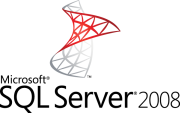- Home
- About Us
- Recovery Services Individual RecoveryEnterprise RecoveryAdditional Recovery
- Software
- Testimonials
- Locations
Malware and viruses
What are they, where do they come from and how does a firewall help a user stay protected?
Lost data from malware and viruses...
One of the biggest headaches for computer users, from the individual with a mobile phone to the largest corporate and government computer, is an attack from malware, viruses and hackers. At one end of the scale it may be a minor inconvenience from a mischievous juvenile, through to criminal gangs who wish to extort money from the unwary. It may even be very competent geeks who wish to enhance their credibility by hacking into the most difficult systems, not for financial gain but to enhance their credibility among their peers.
Government organisations may often wish to disrupt the critical functions of utilities, defence systems, research and development and manufacturing of sensitive materials such as plutonium for nuclear weapons from another country from whom they feel threatened . This is often referred to as cyber warfare.
A Reliable Approach To Managing And Restoring Legacy Tapes
Tape back-up has always been traditionally viewed as a cost-effective and reliable platform for storing corporate data off-line safely and securely.
However, the huge amount of legacy data that companies now need to store on tape, together with legal, regulatory and governance requirements to produce data in an accurate and timely fashion, mean that companies are looking for different approaches to managing and restoring data from tape back-ups.
When we discuss the issue with IT administrators, who are ultimately responsible for identifying and producing data required by the business when responding to compliance, legal or regulatory enquiries, they say their biggest challenge is the inability to identify the specific location of the records required.
We undertook a global study undertaken with 720 IT administrators earlier this year to understand these challenges in more detail. We found that almost a third (30%) said that they do not have clear insight into what information is stored within their archives. Since most organisations are required by law to keep and maintain access to regulated data for a designated period of time, this is a potentially massive problem.
The need for reliable tape restores
We recently worked with a Spanish IT services provider that needed to ensure access to legacy backup tapes of a new end-customer in the insurance services business. The provider needed to guarantee reliable restores from legacy back-up tapes without the costs of migration or the maintenance of retired infrastructures.
The end-customer’s needed to have access to data held on a large number of 3592 and 3592/JA tapes over a period of five years due to strict data retention laws and general good governance. The backup tapes had been created using Tivoli Storage Manager.
Understandably, neither the service provider nor the insurance business wanted to incur the costs of maintaining the Tivoli Storage Manager environment for a five year period for infrequent and ad hoc backup tape restores requests.
Together with the IT service provider, we engineered a cost effective and efficient solution to allow access to the end customer’s backup tapes.
Oracle database Backup and Recovery FAQ
General Backup and Recovery questions
Why and when should I backup my database?
Backup and recovery is one of the most important aspects of a DBA's job. If you lose your company's data, you could very well lose your job. Hardware and software can always be replaced, but your data may be irreplaceable!
Normally one would schedule a hierarchy of daily, weekly and monthly backups, however consult with your users before deciding on a backup schedule. Backup frequency normally depends on the following factors:
- Rate of data change/ transaction rate
- Database availability/ Can you shutdown for cold backups?
- Criticality of the data/ Value of the data to the company
- Read-only tablespace needs backing up just once right after you make it read-only
- If you are running in archivelog mode you can backup parts of a database over an extended cycle of days
- If archive logging is enabled one needs to backup archived log files timeously to prevent database freezes
- Etc.
Carefully plan backup retention periods. Ensure enough backup media (tapes) are available and that old backups are expired in-time to make media available for new backups. Off-site vaulting is also highly recommended.
Frequently test your ability to recover and document all possible scenarios. Remember, it's the little things that will get you. Most failed recoveries are a result of organizational errors and miscommunication.
Data recovery – new GUI backup tool present in vSphere 4
VMware Data Recovery (VDR) – a GUI tool now.
The VMware Data Recovery is an Agent-less disk based backup and recovery solution .Data Recovery can backup/restore your VMs or file level restores of Windows or Linux guess OS.
The principal features of VMware Data Recovery are:
- Disk-based backup and recovery to enable fast backup/restoration of your VMs
- Easy to deploy, because VMware Data Recovery is a virtual machine that runs on VMware ESX and ESXi hosts.
- You are able to restore individual files or entire images as needed.
- Easy to use Assistant and Scheduler to have the possibility schedule backups at night.
- Uses any kind of storage (local storage, NAS, Fibre Channel SAN, or iSCSI SAN support. ) for storing backup images.
How to check and repair MSSQL databases or tables
 Sometime happens with all to need to repair or check the consistency of the Microsoft SQL database.
Sometime happens with all to need to repair or check the consistency of the Microsoft SQL database.
Maybe you find the following error message on run your quesry’s:
SQL Server detected a logical consistency-based I/O error: incorrect checksum
For resolve this error can use the following commnads.
1. Select and check the database
use MyDbName;
dbcc checkdb with data_purity;
In case if you receive some error in teh Database tables can you apply for each table the next sentence, of course first time need to set the database to SINGLE USER MODE.
ALTER DATABASE [MyDbName] SET SINGLE_USER WITH NO_WAIT
2. Repair the errored table:
use MyDbName;
dbcc checktable('myDbTableName', repair_allow_data_loss) 3. After repair do you need to check again the database, and set to MULTI USER MODE
ALTER DATABASE [MyDbName] SET MULTI_USER WITH NO_WAITReference http://my.bergersoft.net/2009/10/23/how-to-check-and-repair-mssql-databases-or-tables/
Reference: http://my.bergersoft.net/2009/10/23/how-to-check-and-repair-mssql-databases-or-tables/
Copyright © 2025 DataRecoup Recovery Services. All Rights Reserved. Designed by DataRecoup Lab.




